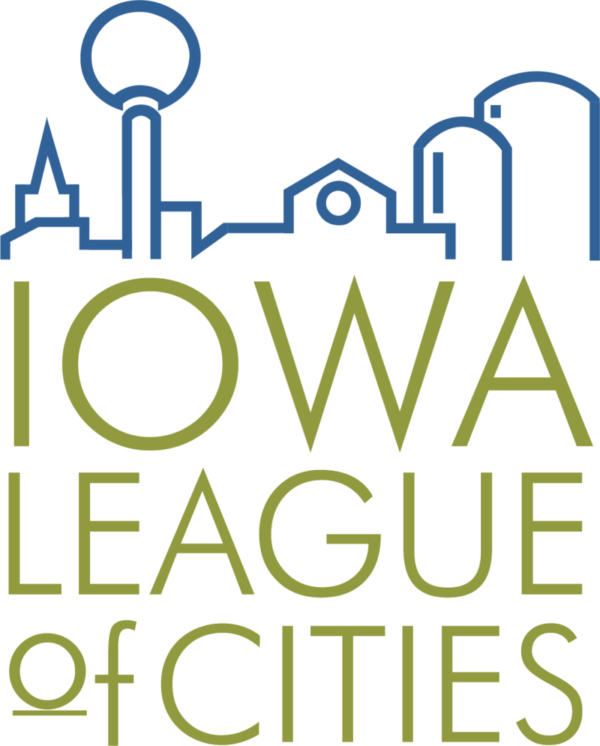Senate Study Bill 1125 has been amended and renumbered to Senate File 550 (SF 550). This bill proposes multiple changes to local government revenue structures. The League continues to analyze this amended bill and will update this page; these areas may need clarification and may not be an exhaustive list of areas of impact. However, below are some of the sources of impact the League has identified to date.
Bill Summary and Analysis
Divisions I & III
Local Option Sales and Service Tax (LOSST)
This Division repeals the existing local option sales and service tax (LOSST), raises the retail sales and use taxes to 7%, and distributes a portion of these taxes to local governments as follows.
For the retail sales tax portion, the state would distribute the following for the noted calendar years:
| Calendar Years | Pennies per Dollar of Retail Sales Tax Collections to be Distributed to Local Governments |
| 2025-2027 | 1.4 |
| 2028 | 1.35 |
| 2029 | 1.3 |
| 2030 and ongoing | 1.25 |
The sales and use tax increase would be imposed in all jurisdictions in Iowa. While the total statewide collections received by local governments combined would likely be increased compared to the current structure, using the current distribution formula, this change would have a financial impact on some jurisdictions in counties where all jurisdictions currently do not impose the taxes.
To help offset revenue reductions for jurisdictions that currently are collecting LOSST, but whose distributions may be negatively impacted due to this legislation, a local option sales tax supplement fund is established under this bill. One percent of use taxes (not retail sales tax) is distributed to this fund. This proposal creates a baseline year of LOSST receipts collected in calendar year 2024. Then, if the amount in a given year through 2043 is less than that baseline, the jurisdiction may receive a local option supplement from this new fund. If the fund balance is insufficient to pay all gaps in revenue using this process, then jurisdictions receive a prorated supplement amount. The gaps will fluctuate each year based on a number of factors and are difficult to project. The local option supplement fund portion is repealed beginning calendar year 2044, and no supplement applies after that date.
The bill also requires that for any revenue purpose statement (RPS) approved on or after January 1, 2025, 50% of sales tax distributions to cities be used for property tax relief. If existing RPSs end or are amended, newly approved RPSs would be subject to this requirement. The bill specifies certain locations and parameters by which regional transit district-related funding can be determined to be property tax relief to partially meet this requirement. This may also impact existing bonds/debt obligations.
The League is working to clarify if or how the manner in which the location of sale would differ from the current structure under LOSST. Although it appears that the bill does not change the location of sale attribution, retail sales taxes are not currently recorded in the same manner.
Division II
Water Excise Tax
This bill strikes the provision in the Code of Iowa that requires one-half of the money generated by the water service tax (WET) be deposited into the water quality financial assistance fund, which was established to be used for local water quality improvement projects and requires all money generated from the WET be deposited into the general fund of the state. For reference, net deposits for WET for FY22 were about $19.6M.
Division IV
Homestead Property Tax Credit Conversion to a Homestead Property Tax Exemption
Under current law, the homestead property tax credit is a credit to tax that is funded by the state, per Code section 425.1. If not funded by the state, there is not currently a reduction to local government revenues.
This bill would phase out the credit and replace it with an exemption to property tax that increases to a $10,000 exemption per homestead by assessment year 2027 (AY 2027). If the property owner is age 65 or over, they would qualify for an increased exemption of $16,500. If these exemptions are not state-funded, then the exemptions are still given, resulting in a lower tax base for local governments.
Division V
Elderly Property Tax Credit
For eligible individuals, this proposal increases the minimum household income from 250% of the federal poverty level to 300% of the federal poverty level, which presumably will increase the number of individuals to which the credit would apply. This is retroactive to claims filed on or after January 1, 2022.
Division VI
Military Service Property Tax Exemption and Credit
This bill increases the exemption amount for eligible veterans, which would reduce the local government tax base. It also reduces and then eliminates the amount of state funding to local governments for this exemption and credit, which would also reduce the local government tax base. The bill strikes Code Section 25B.7, which strikes the State’s requirement to fully fund.
Division VII
Rollback Reduction on Commercial, Industrial, Rail, Telephone & Telegraph Company Property
SSB 1125 proposes an additional 10% rollback reduction on commercial, industrial and rail properties. Currently, these properties are taxed at 90% of assessed value; this bill would move that to 80% of assessed value over 2 years.
Using fiscal year 2023 (FY 23) as a proxy year for city tax rates and assessed valuation, the formula applied: (city assessed value*0.10) * (city tax rate/1,000) may be used to calculate the impact on a city.
This would be repeated for each of the commercial, industrial and rail property tax classifications. By adding the totals for each city and each of the three property classes, a total estimated revenue reduction for cities (combined) is about $65M (if no levy adjustment were made). This approximately doubles the impact of rollback reductions made in 2012-2013 for the impacted property tax classifications.
This proposal also impacts the rollback on telephone and telegraph company property beginning with AY 2022, due to a change in law that changed such assessment in 2018. This would result in additional revenue reduction for cities (if no levy adjustment were made).
Rollback Reduction on Code Chapter 438 (Pipelines) Property
This bill proposes a 10% rollback reduction on pipeline property over two years. Currently, this is taxed at 100% of assessed value; this bill would move that to 90% of assessed value over 2 years.
Division VIII
Natural Resources and Outdoor Recreation Trust Fund
Division X
Commercial Property Assessment Agreements
This bill proposes that for new revitalization areas established, and those first-year exemption applications for property located in revitalization areas, commercial property will not receive a tax exemption unless the city or county, and the owner of the real estate enter into a written assessment agreement specifying a minimum actual value until a specified termination date for the duration of the exemption period. Then, upon completion of the improvements, the assessor must value the property at least the minimum amount in that agreement, except for in the case of acquisition or reacquisition of the property by a public entity.
Residential Property in Revitalization Areas
For new revitalization areas established after this bill’s effective date, and those first-year exemption allocations for property in revitalization areas, tax exemptions will not be approved for property that is residential property.
Division XI
Tax Increment Finance – Wind Energy Conversion Property
This bill proposes that beginning with fiscal year 2026, any portion of an urban renewal area that contains wind energy conversion property subject to special valuation under section 427B.26, school district foundation taxes are to be kept exempt from tax increment finance (TIF) revenue diversion.
Division XII
Transit Funding
This bill disallows the exception process for allowing a franchise fee to go above 5% and up to 7.5% and provides conditions under which a city with a population greater than 200,000 may impose a franchise fee of up to 7.5% beginning with FY 2024.
Outline of Identified Fiscal Impacts
Increase
| $0.25 of Sales Tax (Derivation: ~$4.15B net deposit – $610M = $3.5B) divided by 6 = $589M, divided by 4 = $147M *Note: there is no breakdown for how much of the refund amount related to the LOSST or hotel/motel incl. in the gross totals, so this uses the net amount for state sales tax minus the footnoted amounts totaling approx. $610M for LOST and hotel/motel and adding the average ratio of the amount of refund (~$7M). | $154M |
| Use Tax to ‘Offset’ Losses (Derivation: ~ $380M/6) | up to $63M |
Decrease
| Water Quality Excise Tax (moved to the general fund, ½ of appropriation is $9.8M) | $10M |
| Homestead Exemption -> Credit (annual appropriation for FY2022 is approx. $144M at the current $4,850 of value. Bill converts to $10,000. Extrapolates to $297M. Homestead owners over 65 have an additional exemption, which would be significant, but unknown total $ impact). | $297M (all entities) (this will be higher with the additional exemption for ages 65+) |
| Elderly (FY22 appropriation was ~$15M. Bill expands, but not sure how much $) | $15M (all entities) (this will be higher with expansion) |
| Military Tax Credit (FY 22 $1.6 – eliminates state funding. Exemption increased by legislation and with a cap on state piece, so the amount is higher than the estimate) | $1.6 (all entities) (this will be higher) |
| All Rollbacks – Commercial -Industrial -Other (Derivation” ~$152M was all entities’ frozen backfill amount in FY17. Cities’ portion was $53M but has grown to $65M loss. Adds at least $12M to the total). With the new 2-tier structure, if we assume the new backfill is sufficient, the total fiscal impact includes that piece backfilled to the 80% rollback level. -Pipeline and telephone property reduction – unknown | Commercial/Industrial/Rail: $65M+ (City) $164M+ (all entities) (this will be higher) -Pipeline and telephone property reduction – unknown |
| Franchise Fees -Reduction of max to 5%, with exception/conditions for DM | Unknown (~$69M collected in franchise fees for FY22) |
Sources include:
State Factbook
Dept of Revenue FY22 Annual Report – https://tax.iowa.gov/sites/default/files/2023-02/IDRAnnualReportFY2022.pdf






